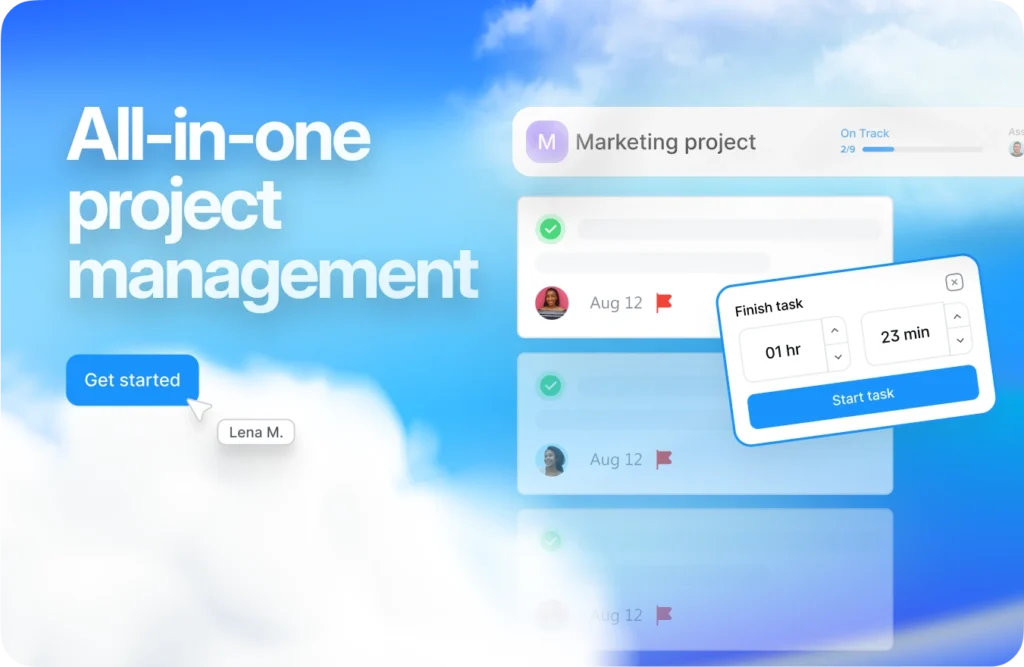What is Productivity and Why is it Important?

Productivity is a term we often hear in workplaces, self-improvement discussions, and even in everyday life. But what does it truly mean? At its core, productivity is about efficiency—getting more done in less time while maintaining quality. It’s not just about working harder; it’s about working smarter.
Why is productivity so important? Whether you’re an individual looking to manage your time better or a business striving for higher profits, productivity directly impacts success. In this article, we’ll dive deep into understanding productivity, why it matters, and how to improve it at work.
Understanding Productivity
Productivity is the measure of how efficiently tasks are completed. It involves maximizing output while minimizing input—whether that input is time, resources, or effort.
From an economic standpoint, productivity is the ratio of output (goods and services) to input (labor, capital, and materials). For individuals, it’s about how effectively they manage their tasks within a given timeframe.
Types of Productivity
Productivity isn’t a one-size-fits-all concept. It can be categorized into different types, including:
- Personal Productivity: How efficiently an individual completes tasks in daily life.
- Workplace Productivity: The effectiveness of employees in achieving business goals.
- Economic Productivity: The overall efficiency of a country or industry in producing goods and services.
- Team Productivity: How well a group collaborates to accomplish shared objectives.
Each of these plays a critical role in defining overall success, whether on a personal or organizational level.

What Does Productivity at Work Mean?
In a work setting, productivity is about how effectively employees use their time to produce high-quality results. It isn’t just about getting more tasks done—it’s about getting the right tasks done efficiently.
Key Elements of Workplace Productivity
- Time Management – Efficiently allocating time to tasks and reducing wasted hours.
- Work Quality – Producing valuable work rather than just increasing the quantity.
- Collaboration – Working well with team members to achieve shared goals.
- Employee Well-being – A well-rested and motivated employee is more productive.
- Use of Technology – Automation and digital tools help streamline tasks.
Factors That Affect Workplace Productivity
- Work Environment: A clutter-free and positive work environment enhances focus.
- Employee Engagement: Employees who feel valued and motivated work more efficiently.
- Workplace Culture: Open communication, support, and trust improve productivity.
- Technology and Tools: The right tools can speed up tasks and eliminate inefficiencies.
- Leadership and Management: Strong leadership fosters a productive workforce.
A productive workplace ensures that employees are efficient without feeling overworked or burned out. It’s about achieving balance while maximizing output.

Why is Productivity Important?
Productivity isn’t just about getting more done—it directly impacts growth, profitability, and success. Whether for individuals, businesses, or entire economies, increased productivity has several key benefits.
For Individuals
- More Free Time: Productivity helps complete tasks faster, leaving more time for personal interests.
- Less Stress: A well-organized workflow reduces stress and anxiety.
- Higher Income Opportunities: Productive individuals are more likely to earn raises and promotions.
- Personal Growth: Efficiency fosters self-improvement and learning.
For Businesses
- Higher Profits: The more efficiently employees work, the more profitable a company becomes.
- Better Work Environment: A productive workplace boosts morale and reduces burnout.
- Competitive Advantage: Businesses that produce more at lower costs gain a competitive edge.
- Customer Satisfaction: Faster service and higher quality lead to happier customers.
For the Economy
- Economic Growth: A more productive workforce means higher GDP.
- Higher Employment Rates: Efficient industries create more job opportunities.
- Improved Living Standards: Increased productivity leads to better wages and services.
Simply put, productivity improves lives—both on a personal and a global scale.
How to Measure Productivity in the Workplace
Measuring productivity is essential for businesses to track efficiency and identify areas for improvement. But how exactly can it be quantified?
Key Metrics for Measuring Workplace Productivity
- Output per Employee: Total output divided by the number of employees.
- Revenue per Employee: Total revenue divided by the number of employees.
- Task Completion Rate: The percentage of completed tasks within a timeframe.
- Employee Efficiency Ratio: Comparing input (time and resources) to output.
- Customer Satisfaction Ratings: Happy customers indicate productive employees.
Methods for Evaluating Productivity
- Time Tracking Software: Helps monitor how employees spend their working hours.
- Performance Reviews: Regular evaluations help assess employee contributions.
- Employee Feedback Surveys: Employees can provide insights on obstacles to productivity.
- Benchmarking: Comparing productivity levels against industry standards.
By using these methods, businesses can make data-driven decisions to enhance productivity.

How to Boost Productivity at Work
Productivity can always be improved. Here are some strategies to enhance efficiency at work.
1. Prioritization and Planning
- Use the Eisenhower Matrix to separate urgent and important tasks.
- Start each day with a to-do list to stay organized.
- Break large projects into smaller, manageable tasks.
2. Eliminating Distractions
- Turn off unnecessary notifications to maintain focus.
- Set specific times for checking emails and messages.
- Use noise-canceling headphones or work in quiet spaces.
3. Encouraging Employee Well-being
- Promote regular breaks to avoid burnout.
- Offer flexible work schedules to improve work-life balance.
- Create a positive work culture where employees feel valued.
4. Enhancing Communication and Collaboration
- Use project management tools like Peerbie, Trello or Asana for teamwork.
- Encourage open communication between employees and management.
- Hold regular team meetings to align goals and expectations.
By implementing these strategies, businesses and individuals can significantly improve productivity.
Tools and Techniques for Boosting Productivity
Best Productivity Tools
- Task Management: Peerbie, Trello, Asana, Monday.com
- Time Tracking: Toggl, Clockify, RescueTime
- Communication: Peerbie, Slack, Microsoft Teams, Zoom
- Automation: Zapier, IFTTT, Automate.io
Proven Productivity Techniques
- Pomodoro Technique: Work for 25 minutes, then take a 5-minute break.
- Time Blocking: Schedule specific time slots for different tasks.
- The Two-Minute Rule: If a task takes less than two minutes, do it immediately.
- The 80/20 Rule (Pareto Principle): Focus on the 20% of tasks that yield 80% of results.

Using the right tools and techniques can transform productivity levels dramatically.
Productivity is the key to success, whether in personal life or the workplace. It’s not about working longer hours but about working smarter. By understanding productivity, measuring it effectively, and using the right tools and strategies, anyone can boost their efficiency.
A productive life leads to less stress, better work-life balance, and greater achievements. Start implementing these techniques today and experience the difference!

